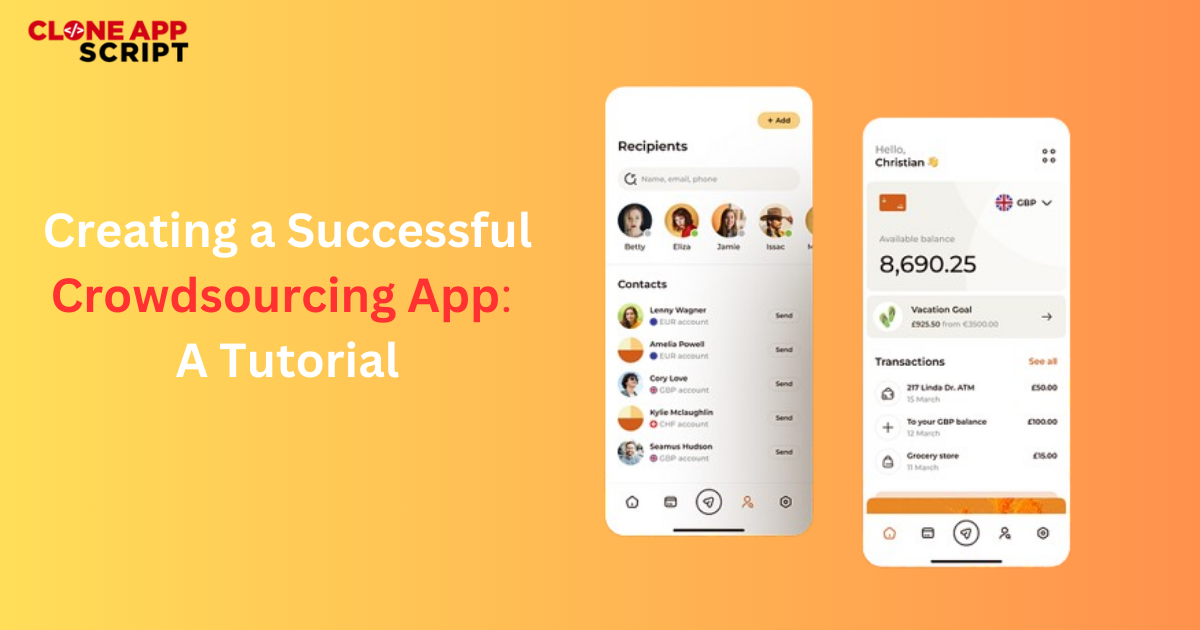Crowdsourcing has converted how companies solve problems, collect thoughts, and perform obligations with the valuable resource of leveraging the collective intelligence of people. With platforms like Kickstarter, Waze, and Uber exemplifying the energy of crowdsourcing, many entrepreneurs are eager to extend their private apps that harness the crowd’s electricity. But how exactly do you skip about crowdsourcing app development? In this instructional, we’ll guide you through the stairs to create a hit crowdsourcing app, from the initial idea to launching your platform.
What is a Crowdsourcing App?
A crowdsourcing app is a platform where users contribute assets, including ideas, finances, abilities, or time, to achieve a specific aim or complete particular obligations. These apps join those who need assistance or offerings with individuals who can provide them. Whether it’s a marketplace for freelance work, an app for crowd-investment creative initiatives, or a platform for gathering facts in actual time, a crowdsourcing app depends on consumer participation for its fulfillment.
Key Features of a Successful Crowdsourcing App
Before we dive into the technique of crowdsourcing app development, let’s first become aware of the vital capabilities each crowdsourcing app has to have:
- User-pleasant Interface: The app’s layout should be intuitive, ensuring users can easily navigate and participate.
- Straightforward Task or Goal Definition: The app must outline its purpose, whether it’s to remedy problems, fundraise, or share information.
- Efficient Communication Tools: Users ought to be able to speak quickly with both the app directors and other participants.
- Security and Trust: Crowdsourcing entails cash, non-public information, or other precious property, so safety is paramount.
- Incentive Mechanisms: To inspire participation, reward structures (financial, recognition, or other) should be in place in the region.
- Seamless Payment Integration: A safe, seamless price machine is crucial. A safe, seamless payment machine is critical to apps that involve financial contributions or transactions.
- Rating and Review System: Allowing users to charge each other for assignment-oriented apps helps build trust within the platform.
Step-by-Step Guide to Crowdsourcing App Development
Step 1: Define the Purpose and Type of Crowdsourcing
There are numerous crowdsourcing varieties, and your app’s fulfillment relies upon narrowing down what kind you want to be aware of. Common kinds encompass:
- Crowdfunding: Platforms like Kickstarter or GoFundMe allow customers to contribute in a price range to an assignment or purpose.
- Crowd Creation: Wikipedia and Threadless are incredible structures where users contribute expertise or innovative content.
- Crowd Wisdom: Platforms like Quora or Waze harness collective understanding and stories to clear up problems or provide insights.
- Crowd Voting: Companies like Threadless use balloting mechanisms to determine which ideas to implement or merchandise to provide.
Clearly outline your reason, whether an investment, trouble-fixing, statistics accumulation, or collaboration, and instruct your app around a particular crowdsourcing model.
Step 2: Research the Market and Your Audience
Understanding your target market is critical. Conduct thorough research into your potential users:
- What problems do they need to solve?
- What motivates them to contribute?
- What existing crowdsourcing platforms do they already use, and why?
Identify your target market’s pain factors and design your crowdsourcing app to offer a better, more efficient answer than your competitors. By addressing gaps within the market, you will position your app for fulfillment.
Step 3: Plan the App Features and User Flow
Once you’ve recognized your crowdsourcing version and target audience, it’s time to devise the app’s features. Ensure your app consists of the following:
- User Registration and Profile Management: Allow customers to sign up quickly, possibly integrating social media login options.
- Dashboard: A smooth and customizable dashboard wherein customers can reveal their contributions, tasks, or projects.
- Task or Project Submission: Depending on the crowdsourcing model, customers must have a manner to submit responsibilities, projects, or thoughts.
- Review and Rating System: This promotes responsibility and consideration between customers.
- Search Functionality: Users need to be able to identify initiatives, duties, or opportunities based on their choices and abilities.
- Notifications and Alerts: Keep customers engaged with well-timed notifications about challenge progress, messages, and updates.
Create wireframes or complex sketches of your app’s format and user flow. This will help you visualize the consumer experience from registration to mission crowning glory.
Step 4: Choose the Right Technology Stack
Choosing the right technology stack is critical within the crowdsourcing app development method. The technology stack consists of programming languages, frameworks, and tools that will power your app. The tech stack will depend on various factors, including:
- Platform: Are you building for Android, iOS, or each?
- Scalability: As your app grows, it must address growing site visitors. Ensure your backend is constructed to scale.
- Third-Party Integrations: For functions like charge processing, protection, and analytics, you’ll need to combine 1/3-party services. Research reliable APIs to integrate seamlessly into your app.
Popular technologies for mobile apps include:
- Frontend: React Native, Flutter, or Swift (for iOS) and Kotlin (for Android).
- Backend: Node.Js, Python (Django), or Ruby on Rails.
- Databases: MongoDB, MySQL, or Firebase for actual-time statistics storage.
- Payment Gateways: Stripe or PayPal for coping with stable transactions.
Step 5: Build and Test Your Minimum Viable Product (MVP)
An MVP is a simplified version of your app with the most honest middle capabilities critical to satisfying early clients. It permits you to launch your product quickly, collect comments, and make upgrades before a full-scale launch.
When building the MVP, focus on:
- Core Functionality: Ensure your app’s essential functions are functional and user-pleasant.
- User Experience (UX): Simplify the design to ensure customers can navigate the app without problems.
- Security: Even inside the MVP phase, prioritize statistics safety, mainly if your app entails monetary transactions or sensitive facts.
Testing is a crucial part of this level. Perform rigorous testing to ensure that there are no bugs or troubles that might frustrate customers. Collect feedback from early adopters and make changes accordingly.
Step 6: Launch and Market Your App
Once your MVP is prepared, it’s time to launch the app. But launching without an advertising method is like building a shop without telling all of us it’s open. Here’s what to recall:
- App Store Optimization (ASO): Ensure that your app’s name, description, and key phrases are optimized for visibility in app stores.
- Social Media Campaigns: Use social structures to build consciousness, exhibit user success testimonies, and power traffic to your app.
- Content Marketing: Create weblog posts, films, and tutorials to teach customers how your app solves their troubles.
- Influencer and Community Outreach: Partner with influencers and groups within your area of interest to gain exposure.
Consider a preliminary soft release in a specific location or among a small target market to test the waters before launching the product full-scale.
Step 7: Post-launch Support and Continuous Improvement
Once your crowdsourcing app is live, the adventure doesn’t stop there. Continuous improvement and upkeep are crucial to keeping users engaged. Post-launch efforts should include:
- Regular Updates: Roll out new features, restore bugs, and enhance overall performance based on personal remarks.
- User Engagement: Keep customers involved by implementing rewards, introducing new tasks, and constructing a robust community.
- Analytics Tracking: Monitor how customers engage with your app. Tools like Google Analytics or Mixpanel can provide precious insights into a person’s behavior.
- Customer Support: Ensure customers can, without difficulty, report troubles and get admission to help while wanted.
A long-term method focused on user delight and platform increase is essential for a hit crowdsourcing app.
Conclusion
Building a successful crowdsourcing app requires careful planning, the proper era, and a consumer-centred technique. By following the steps in this educational, you’ll be well on your way to creating an app that could leverage the crowd’s energy to solve troubles, raise finances, or acquire precious insights.
Whether you’re an entrepreneur seeking to build the next Kickstarter or an enterprise seeking revolutionary answers, crowdsourcing app improvement offers massive potential. With the proper strategy and execution, your app is probably the next huge factor on this area.
If you need help, partnering with an on-demand app development company can accelerate the process and ensure your app meets the highest requirements.



